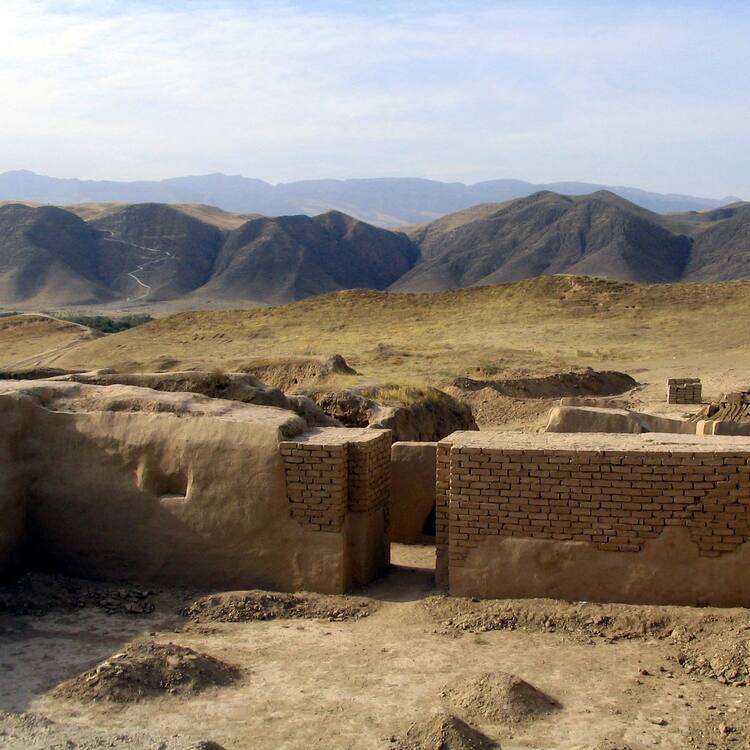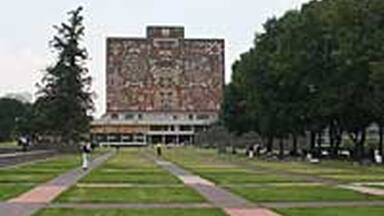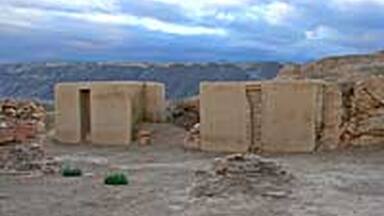Parthian Fortresses of Nisa
Parthian Fortresses of Nisa
The Parthian Fortresses of Nisa consist of two tells of Old and New Nisa, indicating the site of one of the earliest and most important cities of the Parthian Empire, a major power from the mid 3rd century BC to the 3rd century AD. They conserve the unexcavated remains of an ancient civilization which skilfully combined its own traditional cultural elements with those of the Hellenistic and Roman west. Archaeological excavations in two parts of the site have revealed richly decorated architecture, illustrative of domestic, state and religious functions. Situated at the crossroads of important commercial and strategic axes, this powerful empire formed a barrier to Roman expansion while serving as an important communication and trading centre between east and west, north and south.
Description is available under license CC-BY-SA IGO 3.0
Forteresses parthes de Nisa
Les deux tells de l’ancienne et de la nouvelle Nisa signalent le site de l’une des plus anciennes et importantes cités de l’Empire parthe, une grande puissance du milieu du IIIe siècle av. J.-C jusqu’au IIIe siècle de notre ère. Ces tells conservent enfouis dans leur sol les vestiges d’une puissante civilisation antique qui associa avec ingéniosité des éléments de sa culture traditionnelle avec ceux des cultures occidentales hellénistique et romaine. Des fouilles archéologiques dans deux parties du site ont révélé une architecture richement décorée correspondant à des fonctions domestiques, officielles et religieuses. Situé au carrefour d’importants axes commerciaux et stratégiques, cet empire puissant formait une barrière à l’expansion romaine tout en servant d’important centre de communication et de négoce entre l’est et l’ouest, le nord et le sud.
Description is available under license CC-BY-SA IGO 3.0
قلعتا نيزا (الحقبة البارثية)
تقع قلعتا نيزا القديمة والجديدة في إحدى أقدم وأهم مدن الامبراطورية البارثية، التي شكلت قوة بارزة من منتصف القرن الثالث قبل الميلاد حتى القرن الثالث ميلادي. بقيت القلعتان على حالهما نسبياً لحوالي ألفي عام تقريباً وما زالتا تحويان آثاراً لحضارة قديمة ضمت عناصر ثقافتها التقليدية إلى عناصر الحضارتين الهلينية والرومانية. وكشفت الحفريات الأثرية في جزأين من الموقع هندسة معمارية عالية الزخرفة، تعكس الوظائف المنزلية والسياسية والدينية القائمة حينها. جرت معظم الحفريات حتى الآن في القلعة الملكية التي باتت تعرف بـ"نيزا القديمة"، علماً أن الموقع يشمل أيضاً المدينة القديمة التي تعرف بـ"نيزا الجديدة". تبلغ مساحة نيزا القديمة 41 هكتاراً وهي على شكل مخمَّس محاط بسور دفاعي عالٍ يحيط به أكثر من 04 برجاً متعامداً، وزوايا محصَّنة. وتبلغ مساحة نيزا الجديدة 52 هكتاراً، ولها مدخلان، وتحيط بها جدران متينة يبلغ طولها 9 أمتار. تقع آثار نيزا عند تقاطع محاور تجارية واستراتيجية هامة، وهي تشير إلى التفاعل الكبير بين التأثيرات الثقافية في آسيا الوسطى ومنطقة البحر الأبيض المتوسط في هذه الامبراطورية النافذة التي كانت تشكل حاجزاً أمام التوسع الروماني وتستخدم في الوقت ذاته كمركز هام للتجارة والاتصال بين الشرق والغرب، وبين الجنوب والشمال. كما يشهد الموقع على أهمية هذه الإمبراطورية، وغناها وثقافتها.
source: UNESCO/CPE
Description is available under license CC-BY-SA IGO 3.0
尼莎帕提亚要塞
尼莎帕提亚要塞由新旧两组台形遗址构成,展示了帕提亚王国最早和最重要的城市遗址。帕提亚王国是公元前3世纪中期至公元3世纪的大国。在近两千年的历史中,这里几乎从未遭到破坏,将古代文明的发掘遗址保存下来,并巧妙地将自身的传统文化元素和希腊及西罗马元素结合起来。对两处遗址进行的考古挖掘发现了装饰精美的建筑,展示了室内、城邦和宗教方面的功能。挖掘工作一直在皇家城堡内进行,现在被称为“老尼莎”。这处遗址还包括被称为“新尼莎”的古代城镇。老尼莎是占地14公顷的台形土墩,形状为不规则的五边形,四周是建有40多个矩形塔台的防御土墙,与各个墙角侧面相接的是坚固的棱堡。占地25公顷的新尼莎四周是高达9米的围墙,有两个入口。坐落在重要的商业和战略枢纽交叉路口的尼莎考古遗址,生动地展现了中亚和地中海地区对大国文化影响之间的互动,在充当东西方、南北方之间重要的通讯和贸易中心的同时阻挡了罗马的扩张。这一遗址见证了帝国的重要性、财富和文化。
source: UNESCO/CPE
Description is available under license CC-BY-SA IGO 3.0
Парфянские крепости Нисы
Ниса - древнейший и богатейший город Парфянской империи – государства, славившегося своим могуществом на протяжении шести веков, с середины III в. до н.э. по III в. н.э. Два холма Старой и Новой Нисы хранят в себе следы античной цивилизации, соединившей изысканность своей традиционной культуры и элементы культуры античного Рима и Греции. Археологические раскопки, проведенные в двух частях городища, позволили найти богато украшенные архитектурные сооружения - жилые постройки, официальные и культовые здания. Город находился на важном перекрестке торговых путей и стратегических интересов. Парфянское государство служило своеобразным барьером, сдерижвившим имперские устремления Рима, но при этом оставалось значимым связующим центром между востоком и западом, югом и севером.
source: UNESCO/CPE
Description is available under license CC-BY-SA IGO 3.0
Fortalezas partas de Nisa
Los tells gemelos de la antigua y la nueva Nisa marcan el emplazamiento de una de las ciudades más antiguas e importantes del Imperio Parto, que fue una gran potencia desde mediados del siglo III a.C. hasta el siglo III de nuestra era. Durante casi dos mil años, ambos tells han permanecido relativamente incólumes y conservan, todavía enterrados, los vestigios de una gran civilización antigua que supo aunar con ingenio su cultura tradicional y elementos de dos culturas occidentales: la helenística y la romana. Las excavaciones arqueológicas efectuadas en las dos partes que integran el sitio han puesto de manifiesto la existencia de una arquitectura ricamente ornamentada e ilustrativa de la vida doméstica, oficial y religiosa de los partos. Situado en la encrucijada de importantes rutas comerciales y estratégicas, el poderoso Imperio Parto fue un bastión contra la expansión romana y un importante centro de comunicación e intercambios comerciales entre el este y el oeste, el norte y el sur.
source: UNESCO/CPE
Description is available under license CC-BY-SA IGO 3.0
ニッサのパルティア要塞群
トルクメニスタン南西部のニッサは、パルティア王国初期の重要な都市の一つで、紀元前3世紀から紀元後3世紀にかけて強大な力を誇った。現在のニッサは新旧二つの丘状の遺跡で、40もの塔に囲まれた王の城砦跡が旧ニッサ、そこから1.5㎞北西の、高さ9mの城壁で囲まれた市街地跡が新ニッサである。2000年にわたって襲撃を受けなかった旧ニッサからは神殿や宮殿、貯水池などの遺構のほか、大理石製の神像や象牙製の杯など、ヘレニズムや西ローマ帝国の影響を受けた美術品が多く発掘され、ニッサが中央アジアと地中海方面の文化交流点だったことと同時に、パルティア王国の威光や富を伝えている。source: NFUAJ
Parthische Forten van Nisa
De Parthische Forten van Nisa bestaan uit twee tels (heuvels) van Oud en Nieuw Nisa. Ze markeren de plek van een van de eerste en meest belangrijke steden van het Parthische Rijk, een grootmacht van medio 3e eeuw voor tot de 3e eeuw na Christus. De plek bevat overblijfselen van een oude beschaving die zijn eigen traditionele culturele elementen combineerde met die van het Hellenistische en Romeinse westen. Het Parthische Rijk lag op het kruispunt van belangrijke commerciële en strategische assen. Zo vormde dit belangrijk communicatie- en handelscentrum tussen oost en west en noord en zuid een belemmering voor Romeinse uitbreiding.
Source: unesco.nl
Outstanding Universal Value
Nisa was the capital of the Parthian Empire, which dominated this region of central Asia from the mid 3rd century BCE to the early 3rd century CE. As such it formed a barrier to Roman expansion, whilst at the same time serving as an important communications and trading centre, at the crossroads of north-south and east-west routes. Its political and economic power is well illustrated by the surviving remains, which underline the interaction between central Asian and Mediterranean cultures.
Criterion (ii): Nisa is situated at the crossroads of important commercial and strategic axes. The archaeological remains vividly illustrate the significant interaction of cultural influences from central Asia and from the Mediterranean world.
Criterion (iii): The Parthian Empire was one of the most powerful and influential civilizations of the ancient world, and a brilliant rival of Rome which prevented the expansion of the Roman Empire to the east. Nisa, the capital of the Parthian Empire, is the outstanding symbol of the significance of this imperial power.
The integrity and authenticity of the property, and also of the surrounding landscape, in terms of the size of the two tells and the siting of the capital at the foot of the Kopet-Dag mountains, are unquestionable. The two tells do not in any sense represent the original appearance of the Parthian capital, but their present appearance is due solely to natural erosion.
The site is gazetted as one of the 1,300 historical and cultural monuments of Turkmenistan. Nisa is also one of the eight State Historical and Cultural Parks (SHCP) that have been created to protect the most significant sites in Turkmenistan. A buffer zone has been established. The property comes within the provisions of the Bagyr town development plan. Serious efforts are still needed to set up an efficient preventive maintenance scheme that will ensure the survival of recently excavated parts of the site. A five-year plan has been formulated for 2006-2010, in order to ensure a better balance between the different activities (e.g. archaeology vis-à-vis conservation) and to combine and harmonize all the existing documents and strategies relating to the site.



